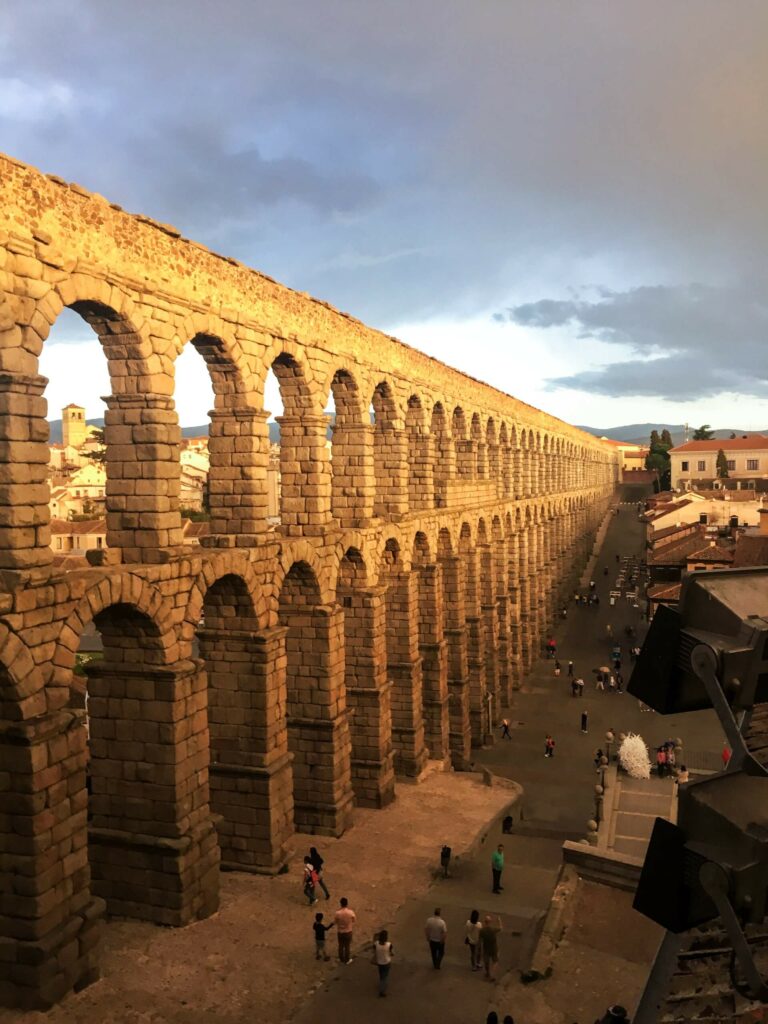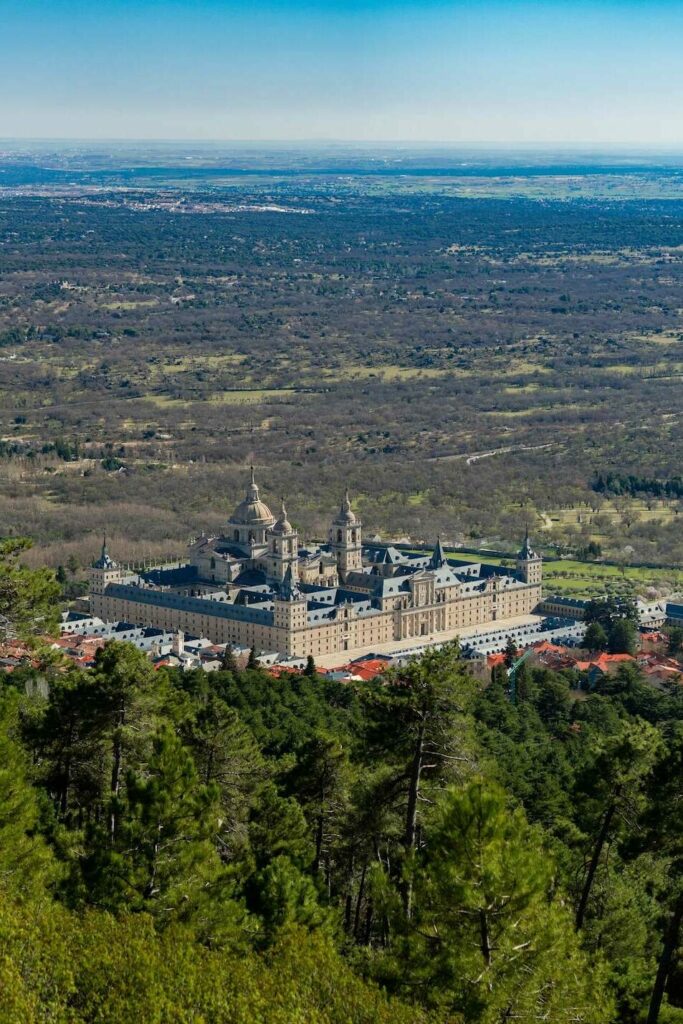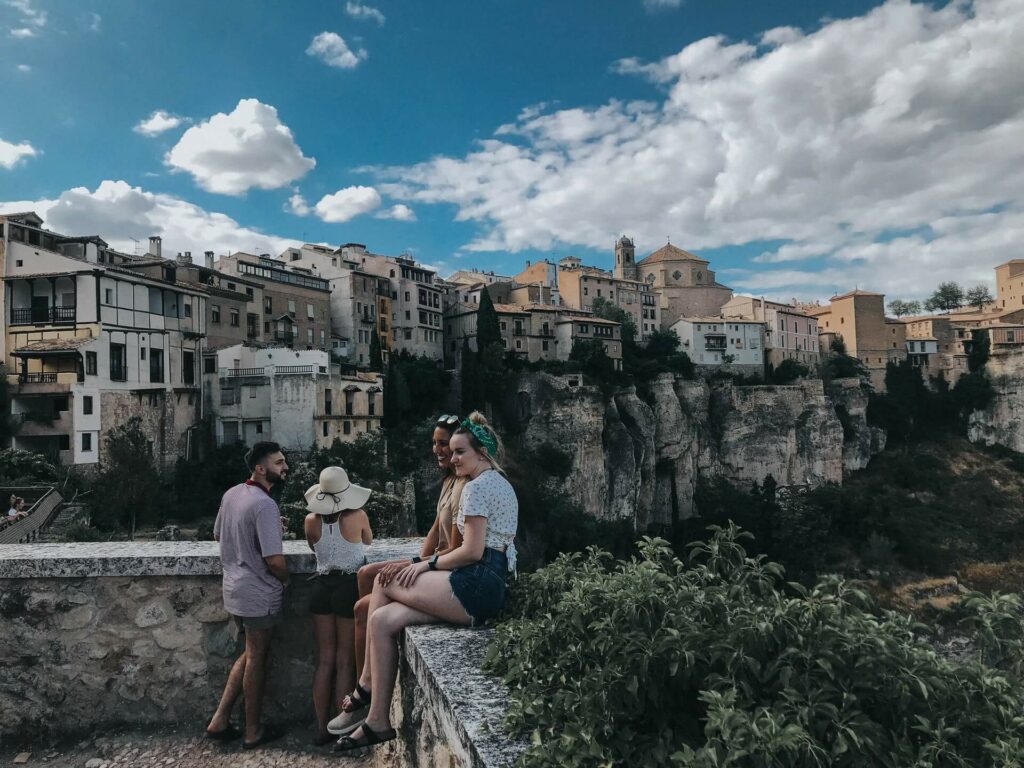15 Day Trips to Escape from Madrid
Written by Nadia Podrabinek
Hello, my name is Nadia. I usually write about traveling (there are so many places to fit all the lifestyles), relocation, and living in a foreign country (adapting to a different culture). My travels stretch beyond Spain, with journeys to the US, Italy, Norway, Portugal, and France. Relocating to Spain in 2018, I lived in cities from Barcelona to Madrid, currently calling Valencia home. Follow me on Twitter, Facebook, Instagram, or LinkedIn! ... show more
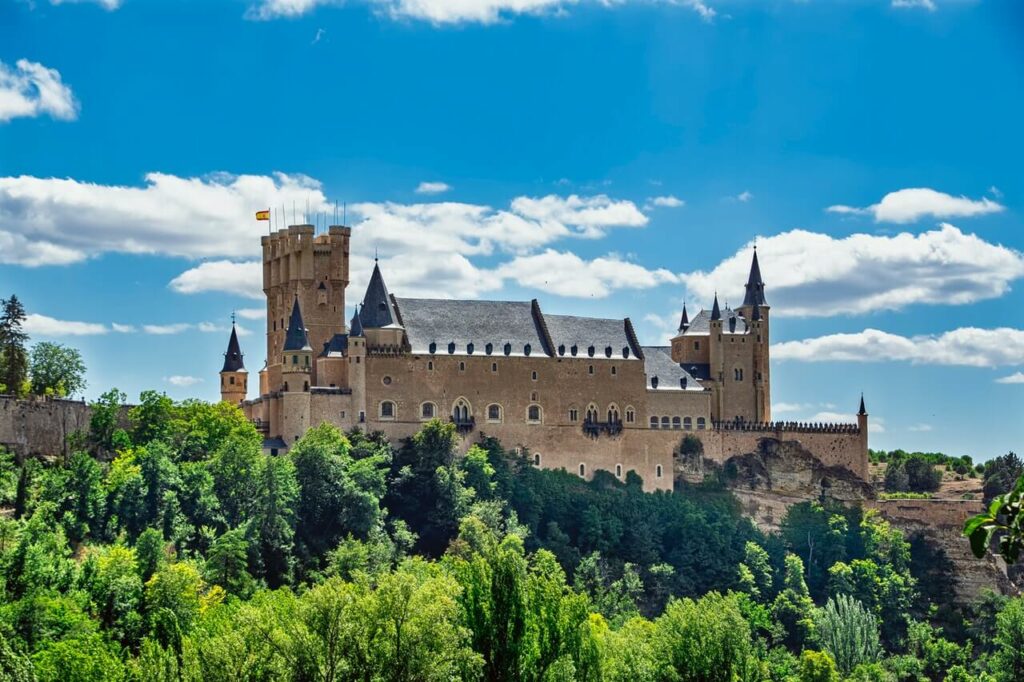
Madrid is the very heart of Spain and the perfect starting point for numerous day trips as the country’s geographical center. There are many well-connected cities around Madrid, with palaces, cathedrals, aqueducts, castles, medieval walls, and other sights. So, leave the hustle and bustle of a big city, get on the train or bus, and explore the beauty of central Spain.
What people say on Reddit
Bilbao is way too far for a day trip. Segovia is nice if the weather cooperates (the views are a big part of the charm). Córdoba is possible as a long day trip if you take the high speed train first thing in the morning and last at night, but that could be tiring to slot in with so few days.
Toledo, El Escorial, Aranjuez, are other options close by.
ultimomono
Alcalá de Henares, El Escorial, Aranjuez, Toledo, Segovia. Besides, if you do not mind wake up early, take speed train and you could visit Valencia, Alicante, Zaragoza or Barcelona (2-3 hours train trip). Keep in mind that a lot of museums and monuments are open only on Sunday’s morning and remain close on Monday.
Estatilio_Tauro
Toledo is great for a day trip and I recently did Segovia. For Segovia the bus might be best as the high speed train leaves from the north of Madrid and then leaves you well outside the city center of Segovia and you need to take a local bus to reach the center. I don’t know the bus details but I heard it drops you in the center.
bklynparklover
We took a train from Madrid and walked all the way from the station to Toledo. Walked by the river, up the walls, into the town. From there, we visited places of interests on our own accord.
Was hot as hell and definitely not recommended if you don’t have water and aren’t in decent athletic shape. But it was a fantastic walk and definitely the best way I imagine.
_ass_burgers_
The Best Day Trips from Madrid I would do first
- Toledo
- Segovia
- El Escorial
- Ávila
- Alcalá de Henares
- Cuenca
- Aranjuez
- Chinchón
- Brihuega
Toledo
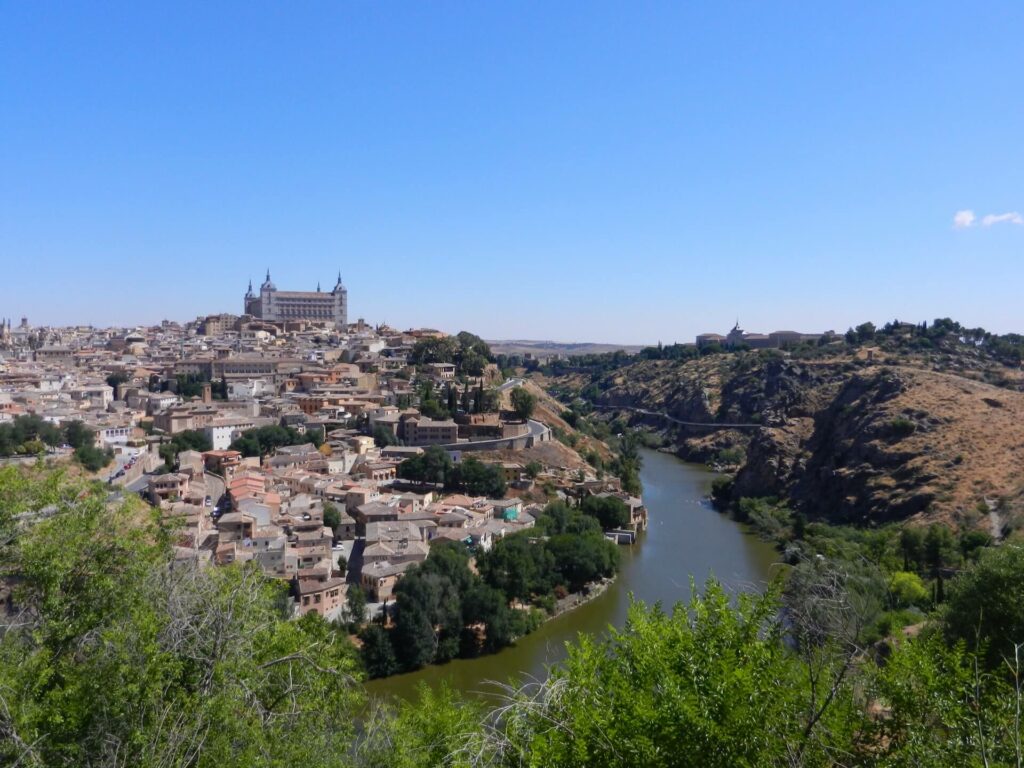
Toledo is the top day trip from Madrid and it is a UNESCO World Heritage city. Toledo, for centuries the capital of Spain, presents an incredible ensemble of cultures and religions. Make sure you dedicate at least an entire day to Toledo.
It’s a cool place to go because it was the capital of Spain for a long time, so there’s a lot of history dating back from the Moors, the Jewish people, the Catholics, and the Visigoths. In short, it’s a great mixture of history and beauty. It is so much fun walking down Toledo’s narrow streets, wondering, “Wow, what all happened here?”.
You’ll want to see the Cathedral. It’s an essential part of the city—it is the seat of the Catholic Church in Catholic Spain. Go in, do the tours, and see all those things. It’s well worth it.
Also, you can go to the Alcazar, which is an Army museum here. And there’s a bunch of churches and museums around town that you can explore. It’s relatively easy to see the city, so wander around it and take all these things in.
How to get to Toledo from Madrid:
Train (operated by Renfe)
- Departs: Atocha Station in Madrid
- Arrives: Toledo train station
- Shortest travel time: 33 minutes
- Tickets: from €14
Bus (operated by Alsa)
- Departs: Plaza Elíptica in Madrid
- Arrives: Toledo bus station
- Shortest travel time: 45 minutes
- Tickets: from €6
Useful Video
Ávila
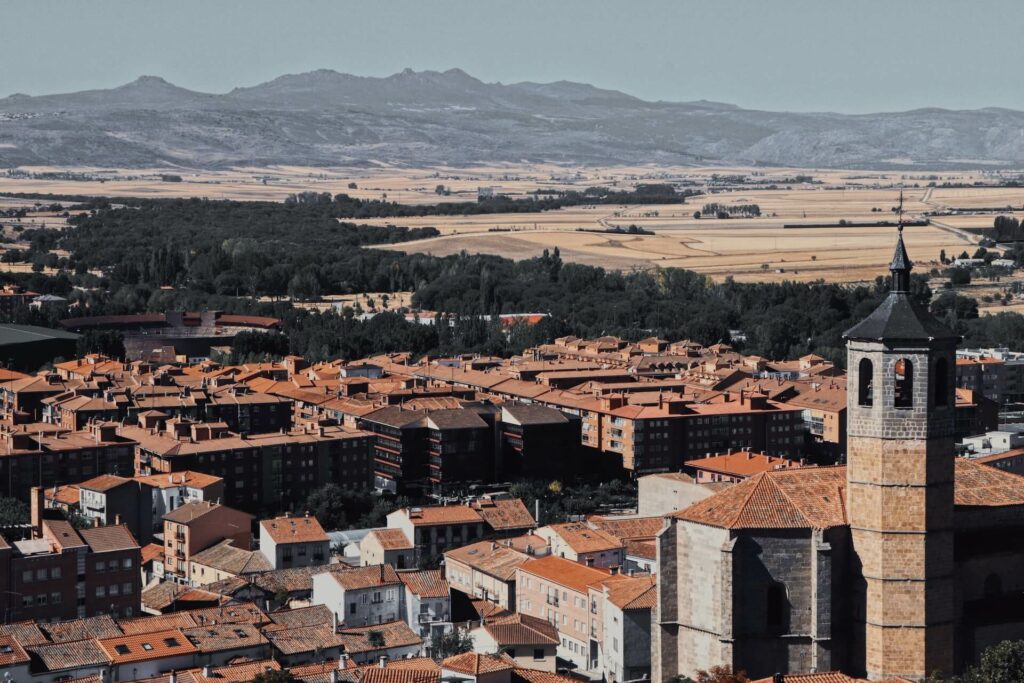
Ávila is also a UNESCO World Heritage city, with its historic center surrounded by Spain’s most impressive and famous medieval walls. These walls are really massive, and you can walk along and even on top of them!
Inside these walls, there is a beautiful and well-preserved city. You can wander through the old town and see the Cathedral.
Make sure you dedicate at least an entire day to Avila also.
How to get to Ávila from Madrid:
Train (operated by Renfe)
- Departs: Chamartín Station in Madrid
- Arrives: Ávila train station
- Shortest travel time: 1 hour 26 minutes
- Tickets: from €10
Bus (operated by Avanza)
- Departs: Estación Sur in Madrid
- Arrives: Ávila bus station
- Shortest travel time: 1 hour 12 minutes
- Tickets: from €9
Segovia
Just a little bit outside Madrid, you find the city of Segovia. The highlight of Segovia is the incredible Roman aqueduct that has been there for about 2,000 years (the exact date of construction remains unknown, but the general consensus is that it would have been built in the 1st century AD).
Segovia’s aqueduct was built using 24,000 stones to transport water to the city from the mountains over 15 kilometers away. The above-ground portion of the aqueduct is over 800 meters long, with 165 arches. It’s no surprise that the aqueduct and Segovia’s old town are UNESCO World Heritage sites.
But there is much more to Segovia than its Roman heritage. You can wander through the city, stumble across its plazas, see the gothic Cathedral of Segovia, taste the famous suckling pig and marzipans (the traditional candy brought by the Moors), and explore other hidden gems.
Apart from the aqueduct, you can also see Alcazar of Segovia, the fortress-style castle on the other side of the town. When you’re inside there, you can see the museum and all this cool history stuff.
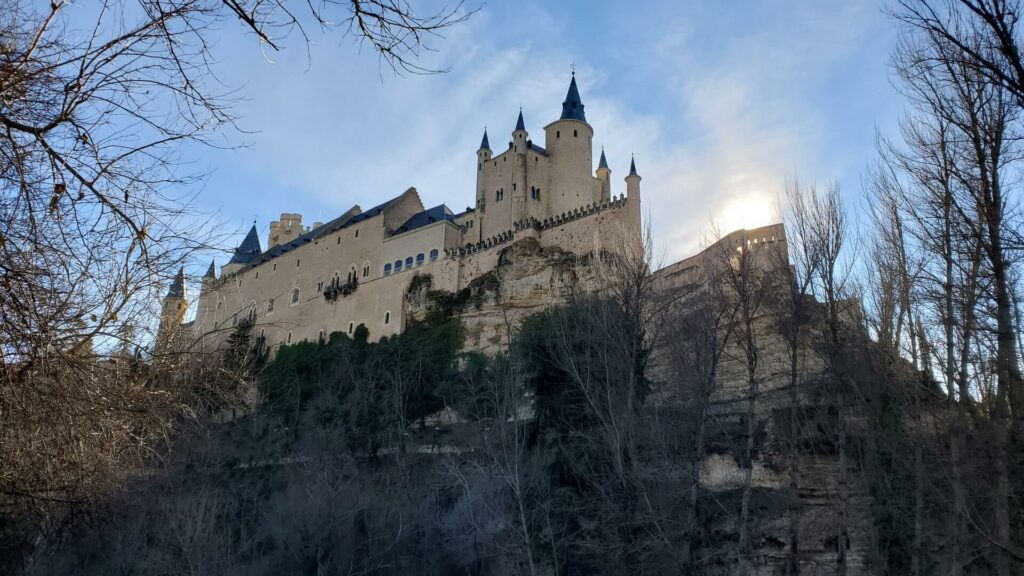
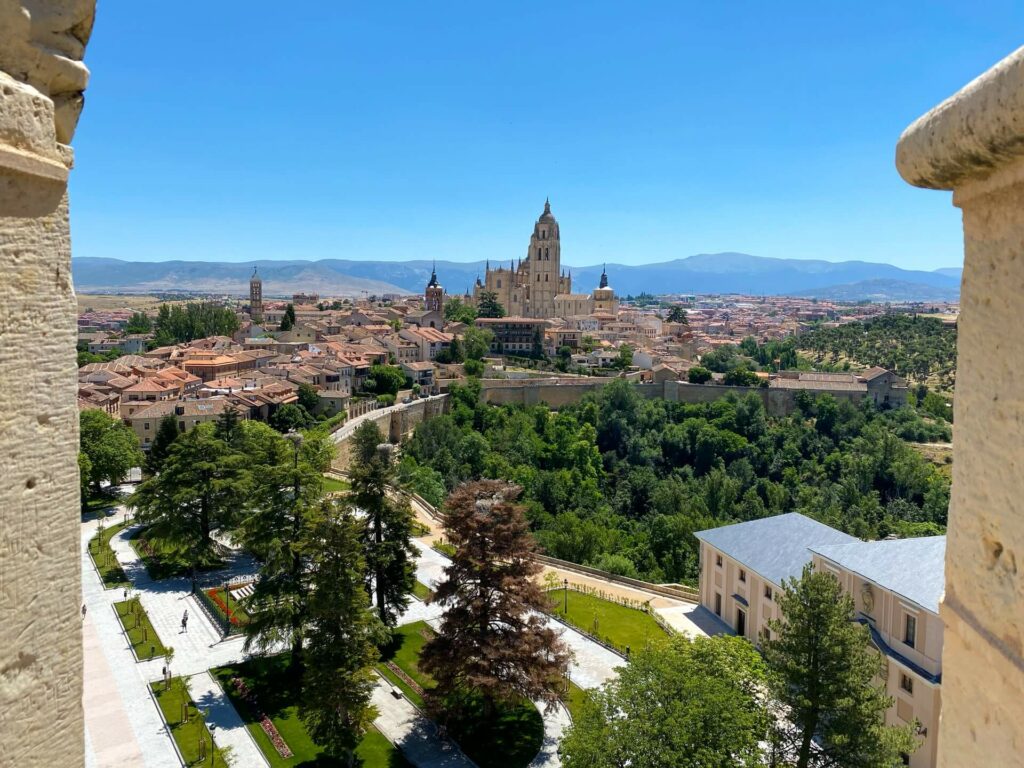
How to get to Segovia from Madrid:
Train (operated by Renfe)
- Departs: Chamartín Station in Madrid
- Arrives: Segovia train station
- Shortest travel time: 27 minutes
- Tickets: from €14
Bus (operated by Avanza)
- Departs: Madrid Moncloa
- Arrives: Segovia Plaza la Estación de Autobuses
- Shortest travel time: 1 hour 20 minutes
- Tickets: from €5
El Escorial
El Escorial is a giant complex formed by a monastery, a church, a Royal palace, a school, and a seminar. It symbolizes the power of Spanish kings between the 16th and 17th centuries. In my experience, half a day is enough for a visit to El Escorial.
I remember the first time I went to El Escorial, and I didn’t notice anything special apart from the huge square. But when you go inside and see the Royal palaces and the Royal apartments, you get that wow-feeling of European monarch pomp and circumstance.
How to get to El Escorial from Madrid:
Train (operated by Renfe)
- Departs: Chamartín/Sol/Atocha Station in Madrid
- Arrives: El Escorial train station
- Shortest travel time: 40 minutes
- Tickets: from €9
Bus (operated by Alsa)
- Departs: Madrid Moncloa
- Arrives: San Lorenzo del El Escorial
- Shortest travel time: 50 minutes
- Tickets: from €5
Alcalá de Henares
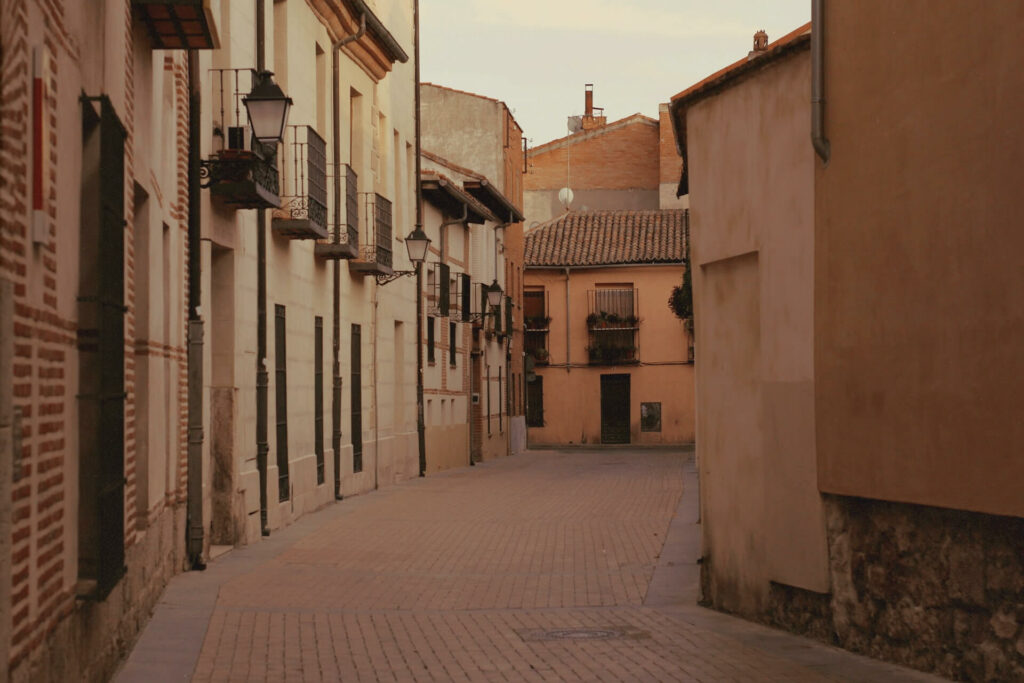
Alcalá de Henares is the birthplace of Miguel de Cervantes, the author of Don Quixote, and one of the most beautiful towns in Spain with an amazing university (the second oldest in Spain).
Fun fact: there is a gate “Puerta de Madrid” in Alcalá de Henares, and in Madrid, there is a gate “Puerta de Alcalá”. They say you can go straight through these gates to reach any of these cities.
See the remnants of medieval walls, Santos Niños Square, the Cathedral “Magisterial,” the University, Cervantes Square, and Bernards Square.
Alcalá de Henares is a cozy and romantic town. Make sure you have at least 5-6 hours for a stop.
How to get to Alcalá de Henares from Madrid:
Train (operated by Renfe)
- Departs: Chamartín
- Arrives: Alcalá de Henares train station
- Shortest travel time: 23 minutes
- Tickets: from €5
Bus (operated by Alsa)
- Departs: Avenida de América, Madrid
- Arrives: Alcalá de Henares city center
- Shortest travel time: 40 minutes
- Tickets: from €7
Cuenca
Cuenca is the most exciting place for me due to its breathtaking walks and location on top of the hill. Imagine dozens of buildings standing on the edge of tall cliffs, almost falling down – these are Cuenca’s famous medieval “Hanging houses.” They withstand enormous mountain pressure and seem etched into the landscape.
Walk down Cuenca’s curved streets, cross the stunning iron-and-wood footbridge, and head to the Museum of Abstract Art and the Cathedral of Cuenca (which reminds me of the Notre-Dame de Paris facade).
After all, sit at any cafe on Cuenca’s streets, and relax for a while. Now you’re ready to go back to Madrid.
You will need a full day for Cuenca as it is not the nearest spot.
Beautiful places in Cuenca:
- Museum of Abstract Art
- Catedral De Cuenca
- Hanging Houses
How to get to Cuenca from Madrid:
Train (operated by Renfe)
- Departs: Puerta de Atocha
- Arrives: Cuenca Fernando Zóbel
- Shortest travel time: 54 minutes
- Tickets: from €30
Bus
- Bus one-way travel time of 2 hours and a half is not suitable for a day trip from Madrid.
Aranjuez
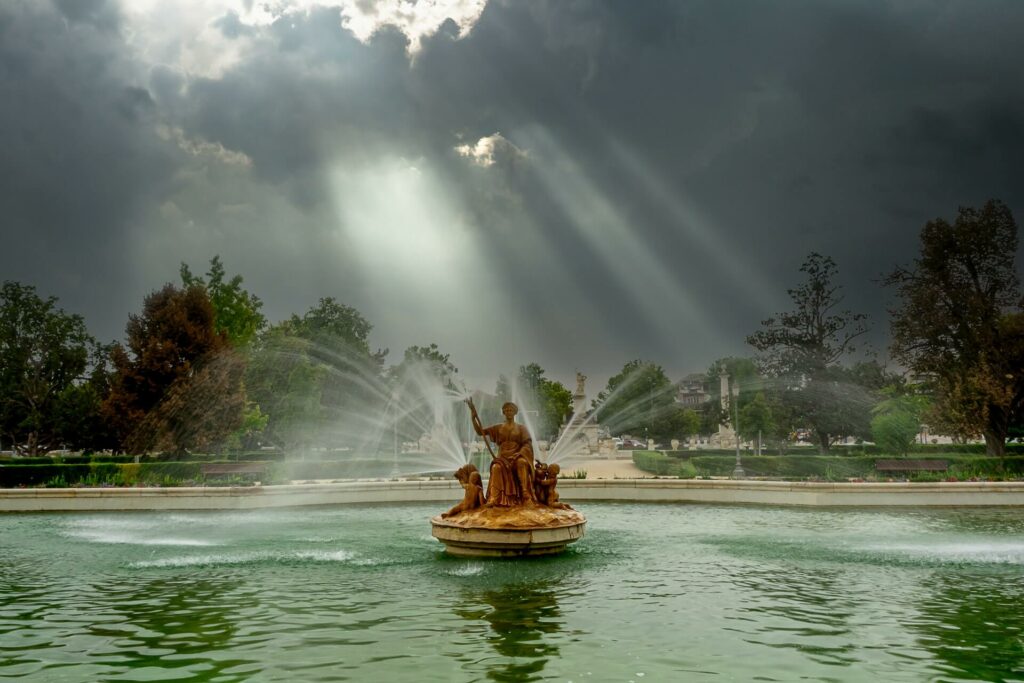
Have you heard of Aranjuez Concert by Spanish composer Joaquin Rodrigo? I guess yes. It is the most famous Spanish musical piece in the world. Just listen to this tiny bit of masterpiece:
This music reflects the memories of the gardens of the Royal Palace of Aranjuez. It was the spring residence of King Philip II in the 16th century, rebuilt in the 18th century by Ferdinand VI.
Aranjuez is one of the 7 Spanish Royal sites, and it has a lot to see, with the Royal Palace of Aranjuez and its gardens as the main attraction.
The Royal Palace is an essential visit. In the 14th century, the Santiago Order built a hospital, but then Catholic kings transformed it into a Royal Palace in the 15th century. It was also used as a Spring Palace for all Spanish kings.
How to get to Aranjuez from Madrid:
Train (operated by Renfe)
- Departs: Madrid Atocha Cercanias
- Arrives: Aranjuez train station
- Shortest travel time: 34 minutes
- Tickets: from €7
Bus
- Departs: Méndez Álvaro Terminal, Madrid
- Arrives: Aranjuez
- Shortest travel time: 34 minutes
- Tickets: from €7
Chinchón
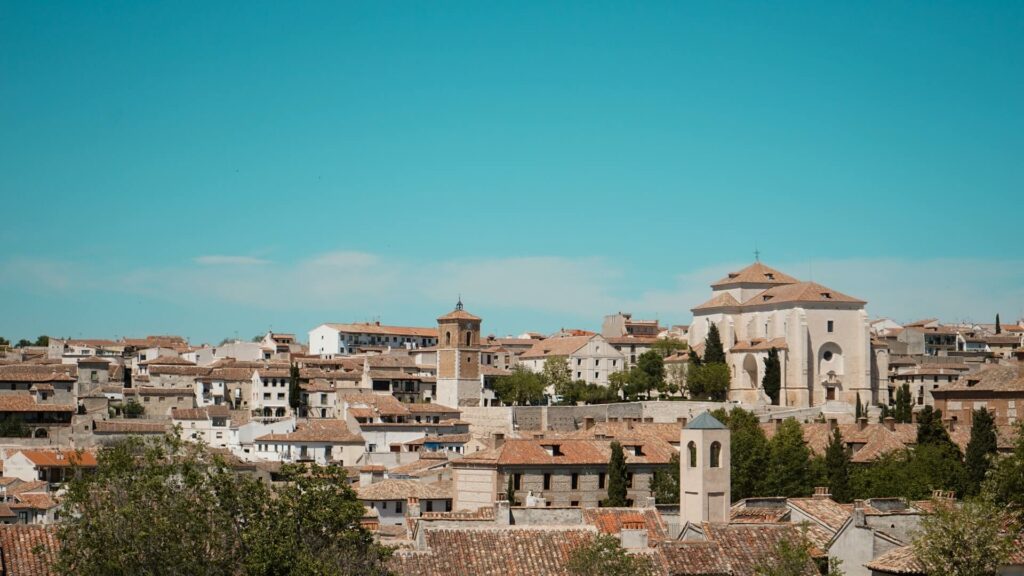
Chinchón is a picturesque town south of Madrid. It was declared a site of artistic and historical interest. Its central square is one of the most beautiful in the world. Although it has a medieval origin, the town of Chinchón fully developed in the 15th century.
There are two castles, and one of them has barely survived. Throughout its history, it was attacked, burned, then bombed, and burned again (by French troops in 1808).
Another essential spot you shouldn’t miss is the Clarissan Convent from the 17th century. It was built for 33 sisters (like the age when Jesus Christ died). Be sure to buy sweets that nuns cook here!
Half a day will be enough for the Chinchón day trip.
How to get to Chinchón from Madrid:
Bus (operated by La Veloz)
- Departs: Plaza del Conde de Casal, Madrid
- Arrives: Chinchón
- Shortest travel time: 45 minutes
- Tickets: from €7
Instagram Review
Brihuega

Described as a Spanish Provence, Brihuega is renowned for its gorgeous lavender fields. You can find Brihuega in the province of Guadalajara to the east of Madrid. The fields bloom only in July, so be careful with your pursuits.
How to get to Brihuega from Madrid
You will need a car to get to the lavender fields. It is a 1-hour drive from the center of Madrid to get to this marvelous scenery.
You can kill two birds with one stone, and visit the Game of Thrones filming location in Guadalajara.
15 Close Cities and Sights for a Day Trip from Madrid
Here is a short comparison table for some noticeable spots if you’re going on a day trip by train or car, sorted by distance.
| Distance, km | By Train | By Bus | |
| 1. Las Rozas Village | 23 | 48m | 3h25m |
| 2. Alcalá de Henares | 40 | 23m | 40m |
| 3. Chinchón | 47 | – | 45m |
| 4. El Escorial | 50 | 40m | 50m |
| 5. Aranjuez | 50 | 34m | 34m |
| 6. Toledo | 72 | 30m | 1h |
| 7. Segovia | 87 | 27m | 1h20m |
| 8. Brihuega | 100 | – | 1h (by car) |
| 9. Ávila | 105 | 1h30m | 1h10m |
| 10. Pedraza | 130 | – | 1h35m (by car) |
| 11. Cuenca | 170 | 54m | >2h |
| 12. Ribera del Duero | 182 | >4h | 2h30m |
| 13. Salamanca | 210 | 2h34m | 2h25m |
| 14. Valencia | 350 | 1h45m | >4h |
| 15. Barcelona | 620 | 2h45m | >7h |
What is the main train station in Madrid?
The central station in Madrid is Puerta de Atocha. It is a railway complex next to the Plaza del Emperador Carlos V, where the Atocha-Cercanías station, the Puerta de Atocha station, the greenhouse area, and the old station connect.
Atocha-Cercanías handles commuter, medium-distance, and long-distance transit traffic heading to Chamartín. This way, it becomes the main junction of the Madrid core, a transit station for all the rail network lines, except for the C-9.
What is the main bus station in Madrid?
The Madrid main bus station is Estación Sur. It is located on Avenida Méndez Álvaro, 83. Access to Estación Sur is convenient, and the station can be reached by different routes, both by urban bus and by metro (Méndez Álvaro station).
Final thoughts
That was my selection of the perfect day trips from Madrid. You may ask, what would you do if you only had time for a couple of these day trips? The choice is yours, but I suggest including the Toledo trip to your itinerary. Avila and Segovia will be solid choices if you are into the historic cities. If you’re looking for a shorter day trip, head to El Escorial, Alcala de Henares, or Chinchón.
If you have any questions or suggestions, leave your comment below!
My Other Posts About Madrid

